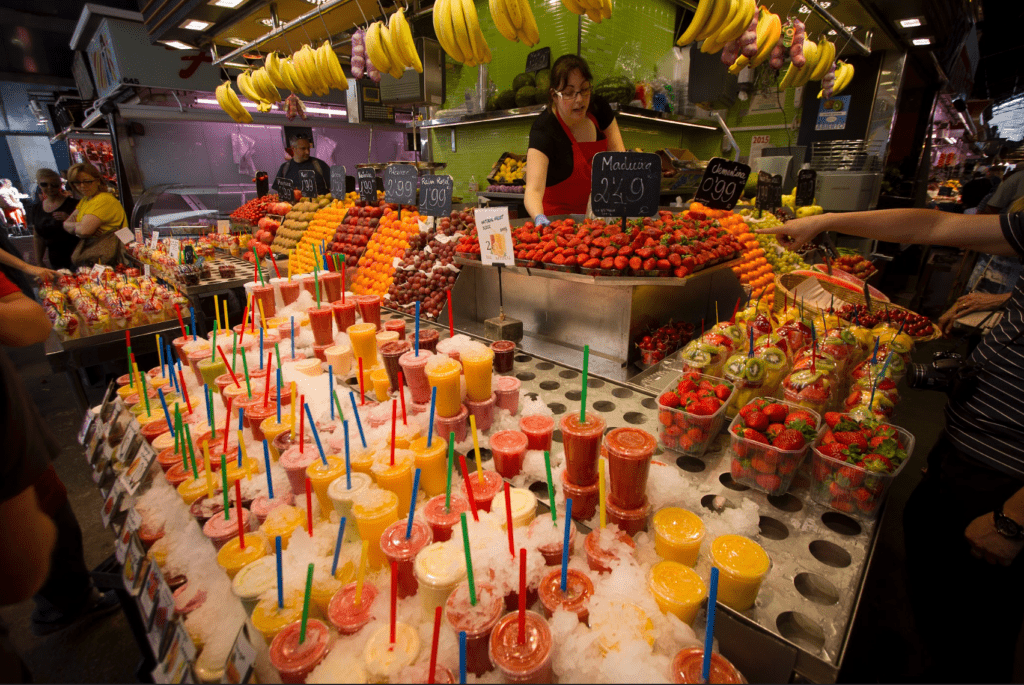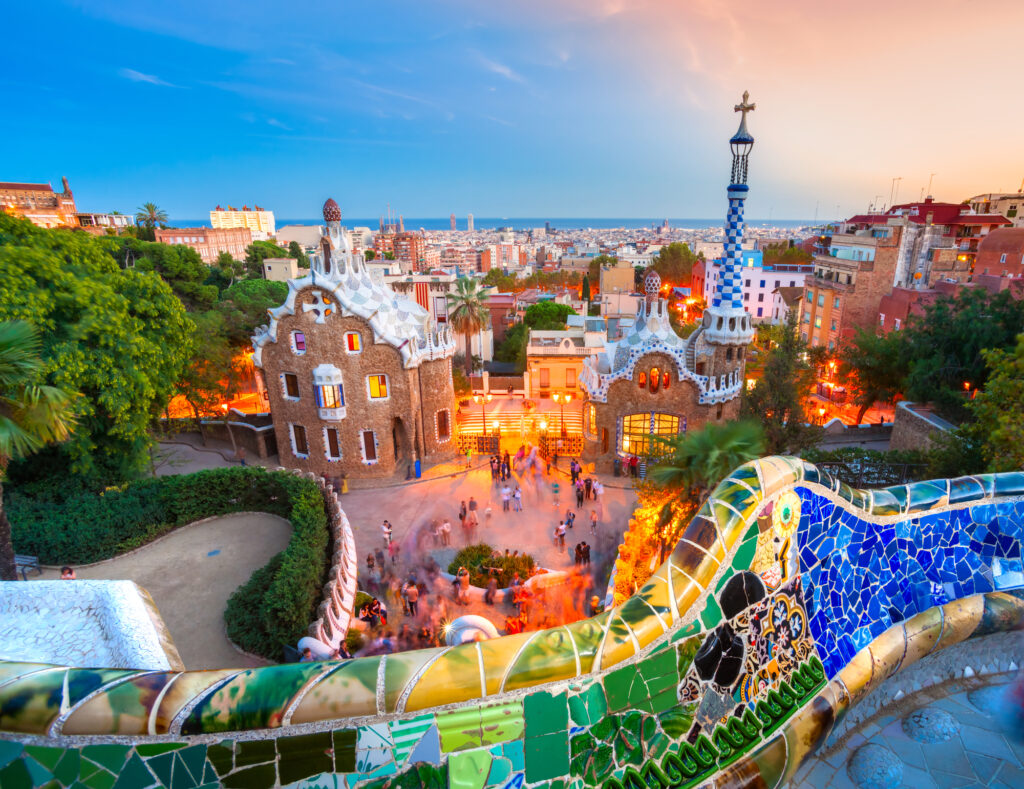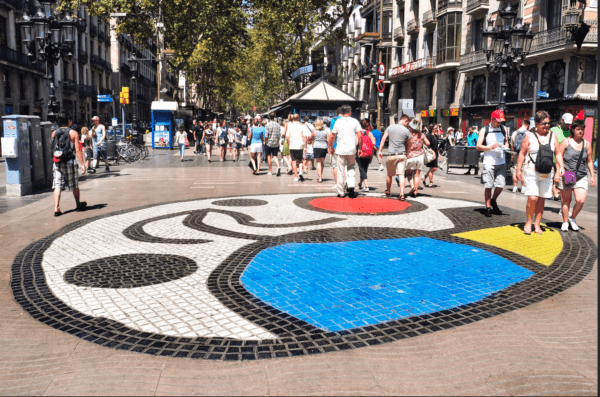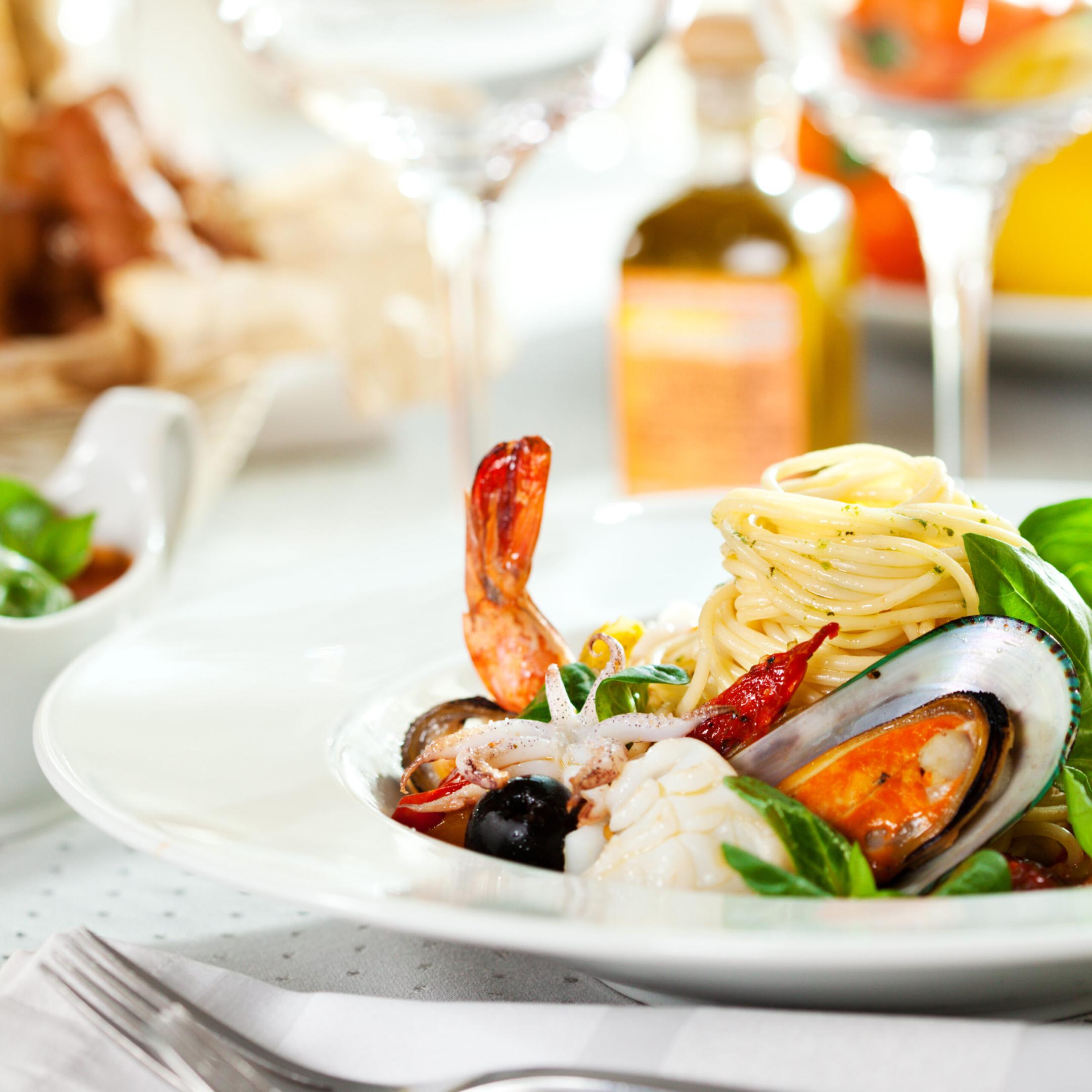Las Ramblas is one of the most iconic avenues in Barcelona, connecting the heart of the city to the Mediterranean Sea. This lively boulevard is full of culture, heritage, street performances, and a unique energy, attracting millions of visitors every year.
Introduction to Las Ramblas
The Fascinating History of Las Ramblas
Originally a stream that separated the old town from its suburbs, Las Ramblas transformed over the centuries into a central and popular avenue. It has witnessed centuries of history, from medieval fairs to cultural events, and is now the symbol of a vibrant and dynamic Barcelona.
Why Las Ramblas is a Symbol of Barcelona
Las Ramblas embodies the spirit of Barcelona: vibrant, diverse, and welcoming. It is a thoroughfare where visitors can discover Barcelona’s culture, local cuisine, and architecture, while interacting with both locals and tourists.
The Different Sections of Las Ramblas
Rambla de Canaletes: The Beginning of the Legendary Avenue
Located at the top of the avenue near Plaça de Catalunya, Rambla de Canaletes is known for its mythical fountain, the Fountain of Canaletes. It is said that drinking from this fountain guarantees a return to Barcelona.
Rambla dels Estudis: Tradition and Culture at the Heart
Also called the “Rambla of Birds,” this section is named after the former university that was located here. It is known for its bird stalls and historical buildings that reflect the city’s academic heritage.
Rambla de Sant Josep (Rambla of Flowers): Mediterranean Colors and Scents
Rambla de Sant Josep is like an urban garden, with many flower stalls. The colors and Mediterranean aromas enchant passersby, creating a unique atmosphere.
Rambla dels Caputxins: Daily Vibrancy
This section hosts street artists, musicians, and human statues, offering a real outdoor show. It is also the perfect place to enjoy nearby cafés and terraces.
Rambla de Santa Mònica: The End of the Road Leading to the Sea
At the port, Rambla de Santa Mònica marks the end of Las Ramblas and leads to the Columbus Monument. This part of the avenue is quieter and provides direct access to the seafront.
Must-See Attractions on Las Ramblas
La Boqueria Market: A Culinary Stop
La Boqueria market, located along Rambla de Sant Josep, is one of the oldest and most colorful in Barcelona. It is filled with fresh products, seafood stalls, cured meats, and local specialties, offering an authentic culinary experience.

Gran Teatre del Liceu: Barcelona’s Cultural Center
This famous opera house, located on Rambla dels Caputxins, is a cultural gem of Barcelona. Open since 1847, it hosts opera, ballet, and concert performances, and is worth visiting for its architecture.
Human Statues and Street Artists: An Outdoor Performance
Las Ramblas is famous for its human statues and street artists who entertain passersby. The performances vary from living statues to musicians, adding a unique artistic touch to the avenue.
Discovering the Heritage Around Las Ramblas
Palau Güell: A Masterpiece by Gaudí
Just a few steps from Las Ramblas, Palau Güell is an architectural work by Antoni Gaudí. A UNESCO World Heritage site, it stands out for its artistic details and innovative architecture.

Historical Buildings and Monuments Along the Avenue
Throughout Las Ramblas, historical buildings and monuments such as the Church of Betlem and the Casa Bruno Cuadros showcase the cultural heritage of Barcelona. These structures add charm and authenticity to the avenue.
Where to Eat and Drink on Las Ramblas
The Best Restaurants and Tapas Bars on Las Ramblas
Las Ramblas is lined with restaurants and tapas bars offering a variety of local specialties. Places like Café de l’Òpera and Escribà are perfect for discovering local gastronomy while enjoying the unique atmosphere of the avenue.
Tips for Avoiding Tourist Traps and Finding the Right Spots
For an authentic culinary experience, explore the small streets adjacent to Las Ramblas, where you will find less touristy but high-quality bars and restaurants frequented by locals.
Practical Tips for Visiting Las Ramblas
Best Times and Tips to Enjoy Las Ramblas Without the Crowds
For a peaceful stroll, it is best to visit Las Ramblas early in the morning or late in the afternoon. In the evening, the avenue is livelier and perfect for enjoying the street artists and lights.
Safety and Precautions During Your Visit
Las Ramblas is a highly frequented area, and it is advised to stay vigilant, particularly against pickpockets. Keep your valuables secure and avoid carrying open bags.
Why Las Ramblas is a Must-Visit in Barcelona
The Importance of Las Ramblas in Barcelona’s Culture
Las Ramblas is more than just a street for Barcelonans; it is a symbolic place that represents the soul of the city. It connects the history, culture, and modern life of Barcelona, offering a unique experience to every visitor.
Our Recommendations for an Unforgettable Visit
For a full immersion, take the time to wander and lose yourself in the corners around Las Ramblas. Discover small cafés, art galleries, and local markets, and let yourself be carried away by the energy of this unique place.
Whether you are a fan of culture, gastronomy, or simply curious to experience the soul of Barcelona, Las Ramblas promises a memorable experience.







